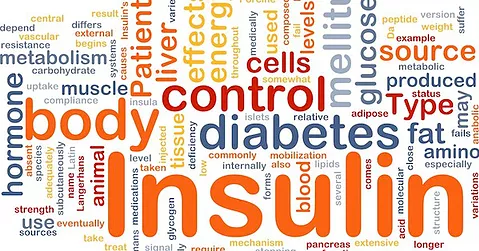What Is Insulin?
Insulin is a hormone produced in the pancreas. When you eat sugar or foods that turn into sugar (pasta, breads, cereals, crackers etc.), your blood sugar levels go up, signalling the pancreas to produce insulin.
Insulin’s job is to balance blood sugar and bring blood sugar levels down back to normal again. The more sugar you eat, the more insulin your pancreas will have to produce.
What Is An Insulin Spike?
Consuming too much sugar, or foods that turn into sugar, will cause an insulin spike (sudden increase of insulin production). As the pancreas tries to keep up with demands, it will over produce insulin, which will push sugar levels down too low. When sugar levels drop too low it is called a “sugar crash”. When your sugar levels crash, it stimulates hunger and a need for more sugar to bring sugar levels back up to normal. So it’s a vicious cycle.
How Insulin Spikes Lead To Insulin Resistant Diabetes
At some point if you continue to put these high insulin demands on your pancreas, it will no longer be able to keep up with the massive insulin production requirements to bring sugar levels back down to normal. This is very dangerous! And this is how high sugar diets can lead to type 2 diabetes.
3 Things That Dangerously Spike Insulin
1. Sugars – both refined and hidden
This may sound obvious. But so many people are unaware that foods like deli meats and yogurts contain added sugar.
2. MSG
MSG, which is a dangerous neurotoxin, also acts like sugar in the body and can spike insulin by up to 300% [1]. That is a dangerous insulin spike!
3. Poor Food Combining
Certain food combinations such as protein+sugar, can spike insulin by up to 200% [1]. Again, that’s a dangerously huge insulin spike. An example would be a turkey sandwich (protein + bread). So it’s really important to learn how to apply proper food combining principles to maximize digestion and avoid dangerous insulin spikes.
All the best to your health!

Catherine Rudolph, CNC
Certified Nutrition Consultant
FoodsThatHealYou.com
Reference:
[1] Dr Eric Berg “The 7 Principles of Fat Burning”

